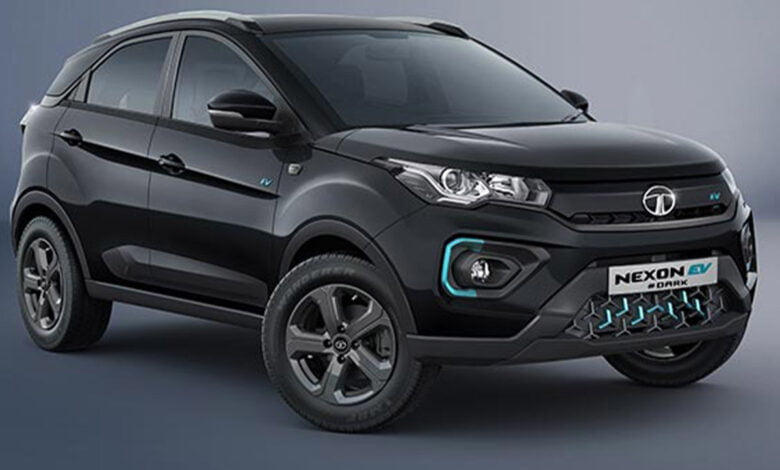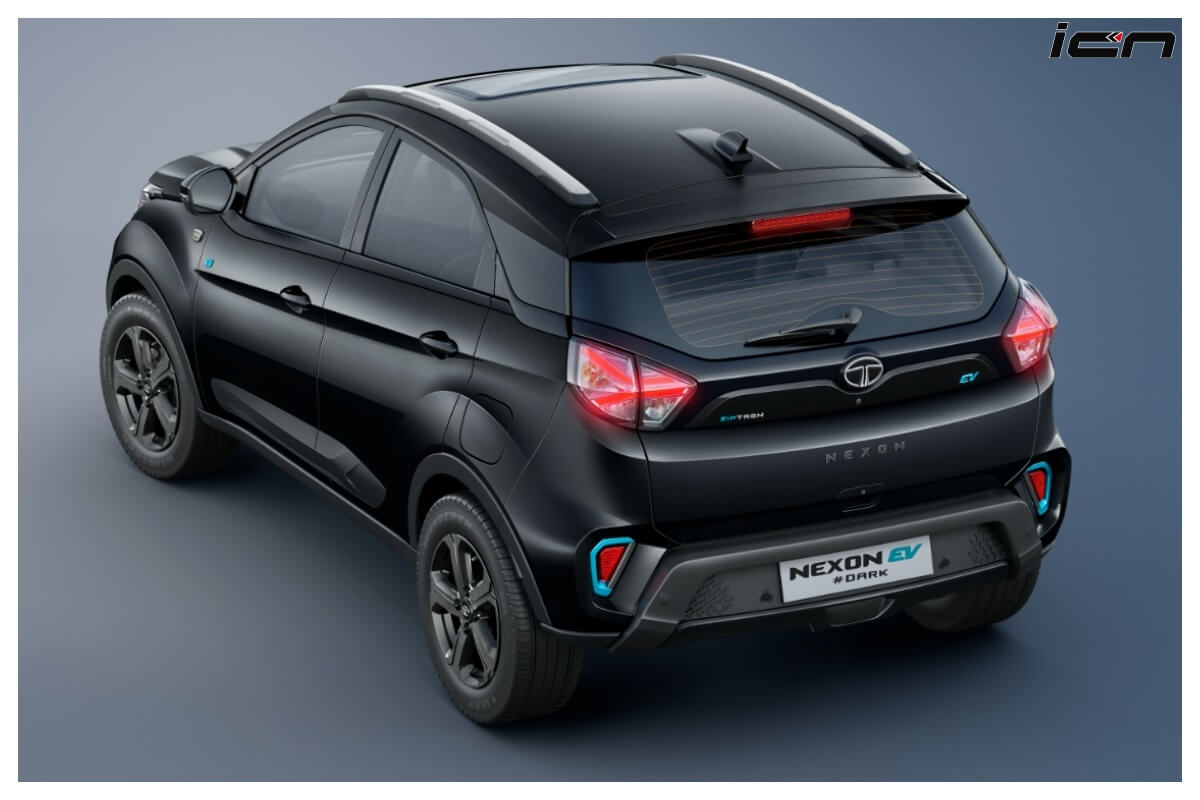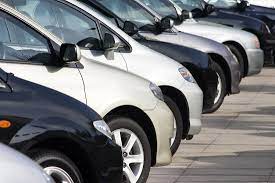Tata uses the electric Nexon for EV drive because of global technology, JLR learning, and customer feedback from Tata.

That night, a loud ovation greeted Tata Motors‘ workplace in Mumbai’s Andheri East. Many people called and texted to express their congratulations, and many more smiled patiently in response even though the company’s passenger-vehicle segment had just accomplished a remarkable milestone.
Many new records were established in Q3 FY22 for the firm. Quarterly and monthly sales reached their highest levels in a decade, with 99,002 units sold in Q3 FY22 (up 44 per cent from Q3 FY21) and 35,299 units sold in December 2021 (up 50 per cent from December 2020). In 2021, Tata Motors sold a record 3,31,178 vehicles, making it the company’s best year ever for passenger car sales.
Even better, it didn’t stop there.
Tata Motors sold 3,545 per cent more electric vehicles (EVs) in Q3 FY22 than in Q3 FY21, for 5,592 cars. Passenger-vehicle EV penetration reached 5.6 per cent during the quarter, up from only 1.8% in the same time the previous year.
The Tata Nexon electric SUV is one product that may take credit for this rapid increase in high-voltage EVs.
Since its debut in January 2020, it has served as a fulcrum for Tata Motors’ EV strategy. It’s the most popular electric car in the passenger vehicle market. In reality, Tata Motors has sold more than 15,000 electric vehicles (including the E-Nexon, E-Tigor, and XPress-T) since FY22.
It has never had a dependability issue, and as a result, it captured a market share of 63.62% in FY22 (11 months). With a five-star safety certification from Global NCAP, it is a direct descendant of the popular internal combustion engine (ICE) Nexon.
How did Tata Motors use the electric Nexon to create a green-mobility narrative? What is the next step in the process of converting to electric power?
Changes everything.
After Tata Motors had a wobbly EV debut with the electric Tigor for the fleet market in 2017, the electric Nexon marked a fresh beginning for the company’s electrification efforts. As a result, Tata Motors stepped up its game, taking lessons learned and adding new technologies to its innovation quotient.
According to Tata Motors Passenger Vehicles and Tata Passenger Electric Mobility managing director Shailesh Chandra, “In the Nexon EV, we used the worldwide achievements in electric powertrain and cell innovations and packaged them to deliver an electric choice designed for different Indian use cases.”
Chandra says its design and specs “broke the EV-adoption obstacles like range anxiety, restricted performance, and durability,” Chandra says.
Using the Jaguar Land Rover (JLR) subsidiary’s expertise in the electric vehicle (EV) market, Tata Motors has developed its version of the I-Pace. A combination of pure electric vehicles and those that depend on JLR technology will be used in Tata’s upcoming EV models.
Tata Motors also employed other Tata group firms, like as Tata universe, to establish and extend the whole EV ecosystem after the first snags. Patcharaphon Wongwetsawat, a senior analyst at LMC Automotive, said that this increased buyers’ trust to purchase electric vehicles.
A new electric vehicle company called Tata UniEVerse has brought together six of the Tata Group’s firms to produce and install charging infrastructure and provide finance for electric powertrain components. These companies include Tata Power, Tata Chemicals, Tata Croma, and Tata Auto Components. The electric Nexon was a gamble that paid off, as seen by its success.

As well as making a technological statement, Tata’s introduction of the Nexon electric vehicle enhanced the company’s brand image. Avik Chattopadhyay, the co-founder of Expereal India, feels that it laid the groundwork for the company to produce additional electric cars.
Tata Motors has chosen to make an impact with ten electric vehicles by 2025, after the success of the electric Nexon.
And it has a lot of work ahead of it…
A plan based on data
Chandra says they’ve learned a lot from 22,000 consumers over the last few years, and they’ll be applying that knowledge to their following EV goods. “The data we have gathered via telemetry offered in the car,” he continues.
“It is being utilized to optimize tactics and control algorithms in order to make vehicle systems more efficient,” adds Chandra, based on the study of driving and traffic patterns. Smart-battery thermal management and cabin-cooling performance are being developed by the manufacturer using data on the performance of its vehicles in different geographies and at varied ambient temperature conditions.
The company has analyzed data from more than 16,000 charging stations at customers’ houses. “The data is being used to make charging units more durable to meet Indian power circumstances. In addition, we learned about our consumers’ charging behaviours and profiles. For example, we use these findings to make appropriate hardware and software improvements to reduce the time it takes to charge during “opportunity-charging.”
Tata Passenger Electric Transportation, a subsidiary of Tata Motors, was established in December to demonstrate further its commitment to promoting green mobility and manufacturing electric vehicles.
Likely, Tata will eventually list the EV unit as its own independent business, increasing its market value compared to competitors that do not provide an electric vehicle unit, according to EY Parthenon partner Srihari Mulgund.
Even TPG Rise Climate has invested $1 billion in Tata Motors’ new vertical, and the automotive giant will invest INR15,000 crore towards electric vehicle research and design. A high-voltage platform called Ziptron will power all of the company’s products, much as the Nexon. According to Chandra, the business’s cars will include a “strong suite of linked and advanced driver assistance systems (ADAS),” which will help the company maintain its advantage over its competitors.
In Tata’s favour, there is one additional factor to consider.
LMC Automotive’s Wongwetsawat believes Tata has successfully launched a “build quality” campaign. Tata cars have a superior crash test rating, influencing customers’ purchasing decisions. As a local carmaker, Tata has a more excellent grasp of the issues that customers face than a multinational corporation.
Tata and Mahindra have finally come of age and are on the level with a Honda or Hyundai in terms of design, build quality, dependability, and service standards. According to Chattopadhyay from Expereal India, “That’s why they’re performing better than before.”
Though Tata Motors and other automakers are making strides in developing electric vehicles, there are still several challenges.

For electric vehicles, the bumps and potholes
A car with a 300-kilometre range in the INR12 lakh to INR15 lakh pricing range, according to Rajeev Singh, partner and automotive leader at Deloitte India, is the sweet spot for any manufacturer interested in EVs. Ideally, the EV should break even in three to four years with 10,000 to 13,000 kilometres of driving per year. Singh predicts solid sales for any car that hits this sweet spot.
However, the high initial cost of EVs in India continues to be a significant barrier to their widespread use. A few examples: INR7.39 lakh for the ICE Nexon (ex-showroom), while the electric Nexon is priced at INR13.99 lakh – INR16.85,000 (ex-showroom). Affordable ness with more localization may thus be advantageous to Tatas.
Customers mustn’t have to worry about running out of battery power or being stuck in traffic because of a lack of charging infrastructure. The resale value of an EV after its fifth year of use will also be an essential consideration in determining the winner of the EV championship.
Generally speaking, the resale value of an electric car is 25 per cent lower than that of an internal combustion engine (ICE) vehicle. As Deloitte India’s Singh points out, the battery alone accounts for 40% of the vehicle’s total price. Battery life is estimated to be between six and eight years. There is some resale value for battery recycling or refurbishment, but it’s a lot less than what you’d get for new batteries. Also, as a result of this fact, banking institutions charge EV buyers a higher interest rate on their loans.
However, despite their decreased resale value, some consumers are eager to switch to environmentally friendly automobiles since they are less noisy, have lower vibrations, and provide a more pleasant ride. Any carmaker that meets these requirements is likely to have a strong selling point for its goods.
Tata Motors is now only selling its electric vehicles in Nepal, but it plans to expand to other nations in the region. For a product to succeed in the global marketplace, it must consider each consumer’s distinct needs, according to Chandra. New-age technology like linked automobiles and advanced driver assistance systems (ADAS) are more readily available in certain areas than in others. To compete successfully in the developed market, automobile manufacturers must be aware of these subtleties.
Today, pricing is not standardized. As a result, automobiles exported from India must be compatible with the charging infrastructure there. If manufacturers can’t get over this one major roadblock, the world will be forced to move toward a single, universally accepted standard for electric vehicles. According to Deloitte India’s Singh, “since there is less value addition in the EV by the manufacturers,” more local assembly near the market will be necessary. To save money on long-distance shipping, this will be implemented.
Cobalt-free battery chemistries, better thermal management systems, and reduced battery costs are essential to decreasing the cost structure while retaining quality and safety, says Chandra.
Due to the lack of manufacturing capacity in the United States, many components needed to build electric vehicles must be imported. The cost structure will be more efficient if these components are manufactured locally. An integrated approach to merging numerous power electronic components will also assist reduce weight and expense while making the vehicle more resilient from a quality and safety standpoint.
As electric vehicles have fewer moving components, Mulgund from EY Parthenon believes that the income stream for automakers from servicing and replacement parts will decline in the future. Because of this, carmakers will need to look at a new revenue source for subscription-based linked features. Leasing or replacing batteries might also be a source of income.

The nitty-gritty.
Assuming 400,000 passenger vehicles are sold each month by 2030, Chattopadhyay from Expereal India believes that Tata Motors’ electric cars will account for more than one per cent of total passenger vehicle sales in 2030 at current prices.
Compared to a year earlier, more than 60 per cent of Tata Motors’ EV customers are first-time purchasers or those who use it as their primary mode of transportation. In Chandra’s words, “the great word of mouth from these clients is helping us further increase our customer base.”
However, in the next two to three years, there will be a lot of competition in the EV market, and the customer will have a lot of options. Automakers who can develop goods that are both popular with consumers and innovative will be able to stay in business.
According to Tata Power, the company plans to build a nationwide charging infrastructure to maintain its leading green-mobility brand.
That’s going to be a significant shift in the game.
edited and proofread by nikita sharma




